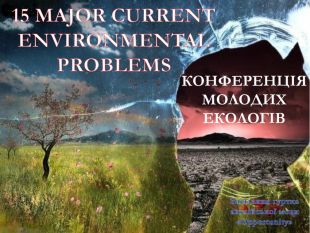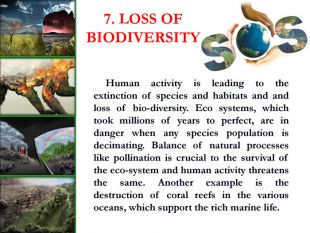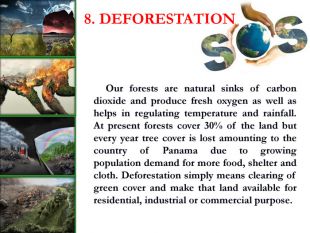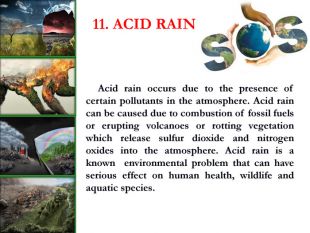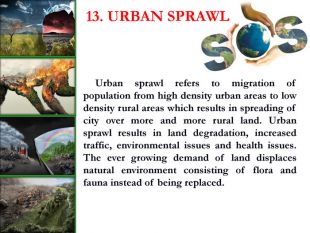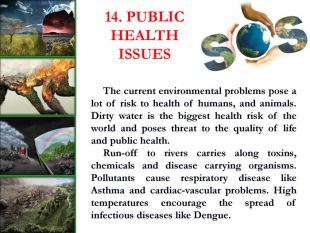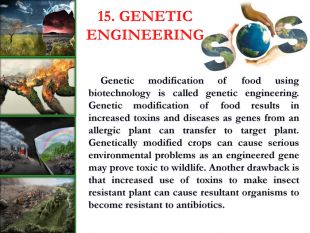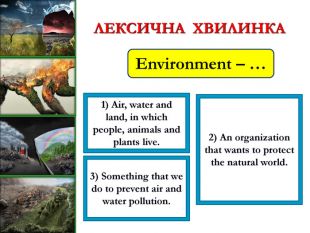Позаурочний захід "The last drop!"
Методична розробка “The last drop!” містить матеріали, що демонструють методику проведення засідання гуртка з англійської мови на екологічну тематику. У матеріалах представлено шляхи розвитку критичного мислення учнів засобами організації учнівської конференції. У роботі наведено приклад інтеграції елементів екологічної освіти у вивчення іноземної мови
- розробка_.pdf pdf
- .ppt ppt

АНОТАЦІЯ
Методична розробка “The last drop!” містить матеріали, що
демонструють методику проведення засідання гуртка з англійської мови на екологічну тематику. У матеріалах представлено шляхи розвитку критичного мислення учнів засобами організації учнівської конференції. У роботі наведено приклад інтеграції елементів екологічної освіти у вивчення іноземної мови
Викладач англійської мови, спеціаліст
першої категорії ________ С.С. Іванченко
СТРУКТУРА ПОЗАУРОЧНОГО ЗАХОДУ
Тип позаурочного заходу: засідання гуртка англійської мови «Opportunity».
Вид позаурочного заходу: учнівська конференція молодих екологів.
Тема. The last drop!
Мета засідання: формувати свідоме ставлення учнівської молоді до
навколишнього середовища; розвивати інтерес до вивчення іноземної мови; розширювати кругозір; сприяти розвитку артистизму; поглиблювати словниковий запас екологічними термінами;
Методична мета: продемонструвати методику розвитку критичного
мислення у роботі з перспективними учнями шляхом інтеграції екологічної освіти з іноземною мовою.
Форми: індивідуальна; фронтальна.
Методи: випереджувальне завдання, кейс-стаді.
Прийоми: доповідь, відео -, аудіо – візуалізація, брейн-стормінг.
Забезпечення: ноутбук, мультимедійний проектор, акустичні колонки,
пам’ятка «Code of ecological rules», презентація «The last drop», відеоматеріали “Pollution is a Global Killer” , “
Beautiful Nature Video & Relaxing Music - Call From The Past
(HD)”, “Earth Song”, “Recycling”.
Міжпредметні зв`язки: хімія; біологія, екологія; англійська мова; географія; основи енергоефективності.
|
Учні знають: - основні екологічні поняття та їх обґрунтування.
|
Учні вміють: - виокремлювати тематичні слова почутого тексту; - застосовувати на практиці граматичний матеріал та асоціативне мислення при роботі з англійськими текстами; - висловлювати власну позицію щодо екологічної ситуації у світі та на Україні. |
ПЛАН ЗАСІДАННЯ
І. Організаційний момент /1 хв.
ІІ. Момент актуалізації уваги аудиторії /10 хв.
2.1. «Earth Song»
2.2. What or Who influences the environment?
2.3. Оголошення теми конференції.
ІІІ. The last drop! /28хв.
3.1. Environmental Problems
3.2. Історична відеосторінки «Pollution is a Global Killer»
3.3. 15 Major Current Environmental Problems
3.4. Code of ecological rules
3.5. Лексична хвилинка
3.6. Екологічні заклики серед нас
3.7. Відеорефлексія
ІV. Рефлексія /6 хв.
4.1. What or Who influences the environment?
4.2. «Beautiful Nature Video & Relaxing Music - Call From The Past (HD)» ХІД ЗАСІДАННЯ
І. ОРГАНІЗАЦІЙНИЙ МОМЕНТ
Методичний коментар. Цінність занять у гуртку англійської мови полягає у вихованні моральних якостей молоді: волі, наполегливості в подоланні труднощів, доведенні до кінця розпочатої роботи, критичного ставлення до себе. Участь у позакласній роботі дає можливість оцінити красу думки чи способу розв’язку, а отже розвиває естетичні почуття. Гурткова робота розширює кругозір учнів, сприяє розвитку критичного мислення, лаконічності мови, правильному застосуванню термінології, виховує в учнів самостійність, ініціативність, прагнення до творчості, розвиває вольові якості та формує культуру праці.
У наш час, коли країна переживає не лише економічну, а й екологічну кризу, невід’ємним компонентом навчально-виховної роботи є інтеграція питань екологічної освіти з різними навчальними предметами, як в урочний, так і в позаурочний час.
Засідання гуртка відбувається у формі учнівської екологічної конференції, де гуртківці мають змогу виступити у ролі молодих вчених-екологів, вони – основні дійові особи заходу. До засідання учні готувалися заздалегідь.
Викладач у підготовці та проведенні заходу виступає у ролі фасилітатора, тобто направляючого вектора, який займає нейтральну позицію, не вмішується у перебіг підготовки учнів, а лише координує їх діяльність.
Захід розпочинається з вітального слова.
ІІ. МОМЕНТ АКТУАЛІЗАЦІЇ УВАГИ АУДИТОРІЇ /10 хв.
2.1. «Earth Song»
Методичний коментар. Захід розпочинається відео кліпом Майкл Джексона «Песнь Земли». Використання прийому «відеовізуалізація» допоможе акцентувати увагу аудиторії на важливості тематики конференції, а також стане «містком» між етапом вступного слова та оголошенням теми заходу.
Перегляд відео закінчується обговоренням. На даному етапі використовується метод «брейн-стормінг», який, як правило, найбільш позитивний результат дає при застосуванні під час мотивації питань, пов’язаних із пошуком шляхів вирішення проблеми, а не усвідомлення змісту понять. Основним змістом використання цього методу є моральні орієнтації та цінності.
2.2. What or Who influences the environment?
Методичний коментар. Викладач ставить ключове запитання заходу, учні висловлюють свої думки.
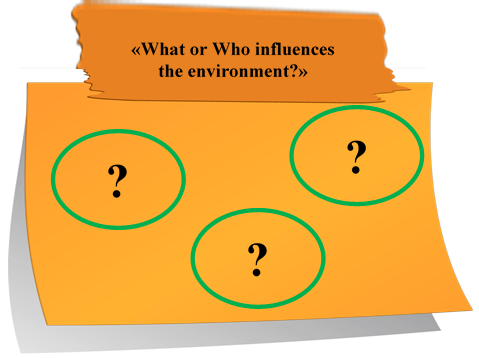
You need to answer the key question "What or Who influences the environment? " in the end of our meeting.
2.3. Оголошення теми конференції
Методичний коментар. Викладач оголошує тему конференції. Відбувається обговорення девізу засідання.
«Formal education will make you a living. Self-education will make you a fortune» (З дипломом можна заробити на життя. Самоосвіта зробить Вас багатими).
The topic of our meeting is «The last Drop». We’ll speak about ecological problems and the way to solve them. Today you’ll be young ecologists.
ІІІ. THE LAST DROP! /25хв.
Методичний коментар. Основну частину конференції ведуть учні, які виступають у ролі молодих вчених-екологів.
На даному етапі використовується метод «кейс-стаді», сутність якого полягає у створенні – вирішенні проблемної ситуації на основі доведених фактів.
3.1. Environmental Problems
Our environment is constantly changing. There is no denying that. However, as our environment changes, so does the need to become increasingly aware of the problems that surround it.
With a massive influx of natural disasters, warming and cooling periods, different types of weather patterns and much more, people need to be aware of what types of environmental problems our planet is facing.
 Global warming has
become an undisputed fact about our current livelihoods; our planet is warming
up and we are definitely part of the problem. However, this isn’t the only
environmental problem that we should be concerned about. All across the world,
people are facing a wealth of new and challenging environmental problems every
day. Some of them are small and only affect a few ecosystems, but others are
drastically changing the landscape of what we already know.
Global warming has
become an undisputed fact about our current livelihoods; our planet is warming
up and we are definitely part of the problem. However, this isn’t the only
environmental problem that we should be concerned about. All across the world,
people are facing a wealth of new and challenging environmental problems every
day. Some of them are small and only affect a few ecosystems, but others are
drastically changing the landscape of what we already know.
Our planet is poised at the brink of a severe environmental crisis. Current environmental problems make us vulnerable to disasters and tragedies, now and in the future. We are in a state of planetary emergency, with environmental problems piling up high around us. Unless we address the various issues prudently and seriously we are surely doomed for disaster. Current environmental problems require urgent attention.
3.2. Історична відеосторінка «Pollution is a Global Killer»
Методичний коментар. Відеоперегляд істричного фрагменту «Pollution is a Global Killer» спонукає учнів замислитися над екологічними проблемами. Відео показує, що екологічне забруднення – це глобальний вбивця.
Під час обговорення сюжету відбувається перевірка запам’ятовування учнями історичного матеріалу.
3.3. 15 Major Current Environmental Problems
Методичний коментар. Конференцію продовжують молоді екологи, які досліджували основні екологічні проблеми. При дослідженні учні працювали з Інтнет-джерелами, тлумачними словниками, словниками англійської мови.
1.
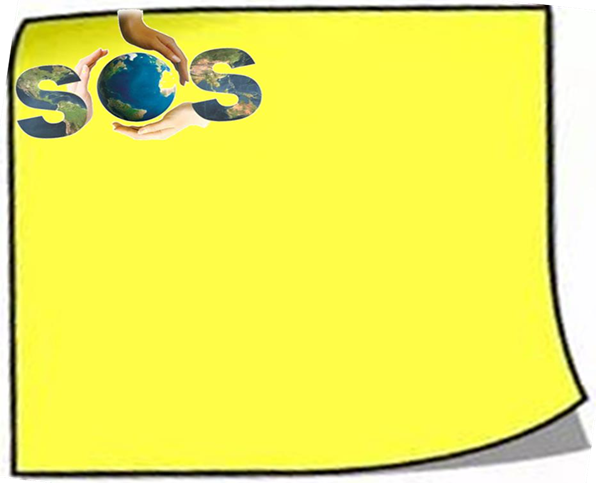 Pollution. Pollution
of air, water and soil require millions of years to recoup. Industry and motor
vehicle exhaust are the number one pollutants. Heavy metals, nitrates and
plastic are toxins responsible for pollution. While water pollution is caused
by oil spill, acid rain, urban runoff; air pollution is caused by various gases
and toxins released by industries and factories and combustion
of fossil fuels; soil pollution is majorly caused
by industrial waste that deprives soil from essential nutrients.
Pollution. Pollution
of air, water and soil require millions of years to recoup. Industry and motor
vehicle exhaust are the number one pollutants. Heavy metals, nitrates and
plastic are toxins responsible for pollution. While water pollution is caused
by oil spill, acid rain, urban runoff; air pollution is caused by various gases
and toxins released by industries and factories and combustion
of fossil fuels; soil pollution is majorly caused
by industrial waste that deprives soil from essential nutrients.
2. Global Warming. Climate changes like global warming is the result of human practices like emission of Greenhouse gases. Global warming leads to rising temperatures of the oceans and the earth’ surface causing melting of polar ice caps, rise in sea levels and also unnatural patterns of precipitation such as flash floods, excessive snow or desertification.
3. Overpopulation. The population of the planet is reaching unsustainable levels as it faces shortage of resources like water, fuel and food. Population explosion in less developed and developing countries is straining the already scarce resources. Intensive agriculture practiced to produce food damages the environment through use of chemical fertilizer, pesticides and insecticides. Overpopulation is one of the crucial current environmental problem.
4. Natural Resource Depletion. Natural resource depletion is another crucial current environmental problems. Fossil fuel consumption results in emission of Greenhouse gases, which is responsible for global warming and climate change. Globally, people are taking efforts to shift to renewable sources of energy like solar, wind, biogas and geothermal energy. The cost of installing the infrastructure and maintaining these sources has plummeted in the recent years.
5.
 Waste Disposal. The over
consumption of resources and creation of plastics are creating a global crisis
of waste disposal. Developed countries are notorious for producing an excessive
amount of waste or garbage and dumping their waste in the oceans and, less
developed countries. Nuclear waste disposal has tremendous health hazards
associated with it. Plastic, fast food, packaging and cheap electronic wastes
threaten the well being of humans. Waste disposal is one of urgent current
environmental problem.
Waste Disposal. The over
consumption of resources and creation of plastics are creating a global crisis
of waste disposal. Developed countries are notorious for producing an excessive
amount of waste or garbage and dumping their waste in the oceans and, less
developed countries. Nuclear waste disposal has tremendous health hazards
associated with it. Plastic, fast food, packaging and cheap electronic wastes
threaten the well being of humans. Waste disposal is one of urgent current
environmental problem.
6. Climate Change. Climate change is yet another environmental problem that has surfaced in last couple of decades. It occurs due to rise in global warming which occurs due to increase in temperature of atmosphere by burning of fossil fuels and release of harmful gases by industries. Climate change has various harmful effects but not limited to melting of polar ice, change in seasons, occurrence of new diseases, frequent occurrence of floods and change in overall weather scenario.
7.
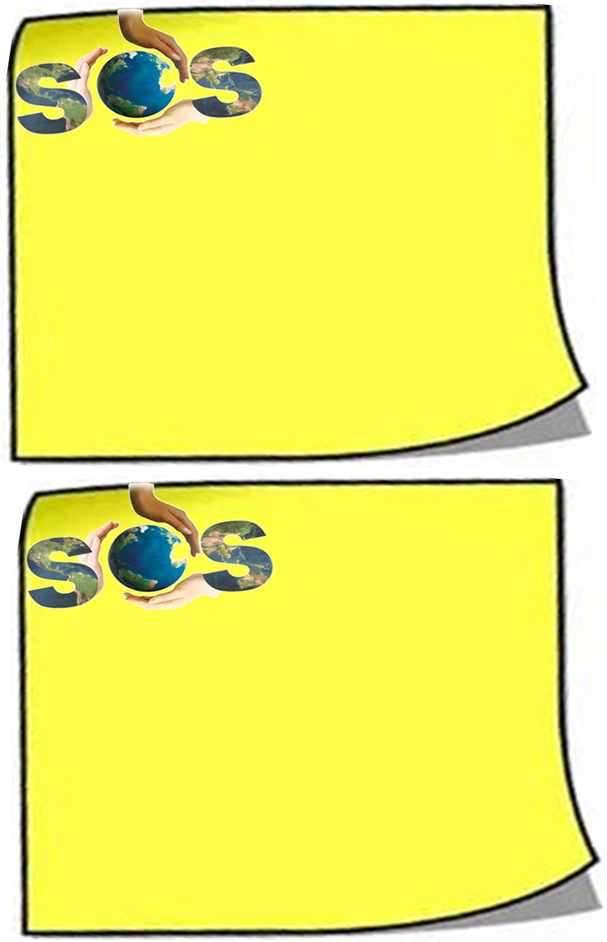 Loss of
Biodiversity.
Human
activity is leading to the extinction of species and habitats and and loss of
bio-diversity. Eco systems, which took millions of years to perfect, are in
danger when any species population is decimating. Balance of natural processes
like pollination is crucial to the survival of the ecosystem and human activity
threatens the same. Another example is the destruction of coral reefs in the
various oceans, which support the rich marine life.
Loss of
Biodiversity.
Human
activity is leading to the extinction of species and habitats and and loss of
bio-diversity. Eco systems, which took millions of years to perfect, are in
danger when any species population is decimating. Balance of natural processes
like pollination is crucial to the survival of the ecosystem and human activity
threatens the same. Another example is the destruction of coral reefs in the
various oceans, which support the rich marine life.
8. Deforestation. Our forests are natural sinks of carbon dioxide and produce fresh oxygen as well as helps in regulating temperature and rainfall. At present forests cover 30% of the land but every year tree cover is lost amounting to the country of Panama due to growing population demand for more food, shelter and cloth. Deforestation simply means clearing of green cover and make that land available for residential, industrial or commercial purpose.
9. Ocean Acidification. It is a direct impact of excessive production of CO2. 25% of CO2 produced by humans. The ocean acidity has increased by the last 250 years but by 2100, it may shoot up by 150%. The main impact is on shellfish and plankton in the same way as human osteoporosis.
10. Ozone Layer Depletion. The ozone layer is an invisible layer of protection around the planet that protects us from the sun’s harmful rays. Depletion of the crucial Ozone layer of the atmosphere is attributed to pollution caused by Chlorine and Bromide found in Chloro-floro carbons (CFC’s). Once these toxic gases reach the upper atmosphere, they cause a hole in the ozone layer, the biggest of which is above the Antarctic. The CFC’s are banned in many industries and consumer products. Ozone layer is valuable because it prevents harmful UV radiation from reaching the earth. This is one of the most important current environmental problem.
11. Acid Rain. Acid rain occurs due to the presence of certain pollutants in the atmosphere. Acid rain can be caused due to combustion of fossil fuels or erupting volcanoes or rotting vegetation which release sulfur dioxide and nitrogen oxides into the atmosphere. Acid rain is a known environmental problem that can have serious effect on human health, wildlife and aquatic species.
12. Water Pollution. Clean drinking water is becoming a rare commodity. Water is becoming an economic and political issue as the human population fights for this resource. One of the options suggested is using the process of desalinization. Industrial development is filling our rivers seas and oceans with toxic pollutants which are a major threat to human health.
13. Urban Sprawl. Urban sprawl refers to migration of population from high density urban areas to low density rural areas which results in spreading of city over more and more rural land. Urban sprawl results in land degradation, increased traffic, environmental issues and health issues. The ever growing demand of land displaces natural environment consisting of flora and fauna instead of being replaced.
14. Public Health Issues. The current environmental problems pose a lot of risk to health of humans, and animals. Dirty water is the biggest health risk of the world and poses threat to the quality of life and public health.
Run-off to rivers carries along toxins, chemicals and disease carrying organisms. Pollutants cause respiratory disease like Asthma and cardiacvascular problems. High temperatures encourage the spread of infectious diseases like Dengue.
15.
 Genetic
Engineering:
Genetic modification of food using biotechnology is called genetic engineering.
Genetic modification of food results in increased toxins and diseases as genes
from an allergic plant can transfer to target plant. Genetically modified crops
can cause serious environmental problems as an engineered gene may prove toxic
to wildlife. Another drawback is that increased use of toxins to make insect
resistant plant can cause resultant organisms to become resistant to
antibiotics.
Genetic
Engineering:
Genetic modification of food using biotechnology is called genetic engineering.
Genetic modification of food results in increased toxins and diseases as genes
from an allergic plant can transfer to target plant. Genetically modified crops
can cause serious environmental problems as an engineered gene may prove toxic
to wildlife. Another drawback is that increased use of toxins to make insect
resistant plant can cause resultant organisms to become resistant to
antibiotics.
3.4. Code of ecological rules
Методичний коментар. Викладач узагальнює.
Один із екологів роздає пам’ятки «Загальні екологічні правила». We must remember the most important ecological rules.
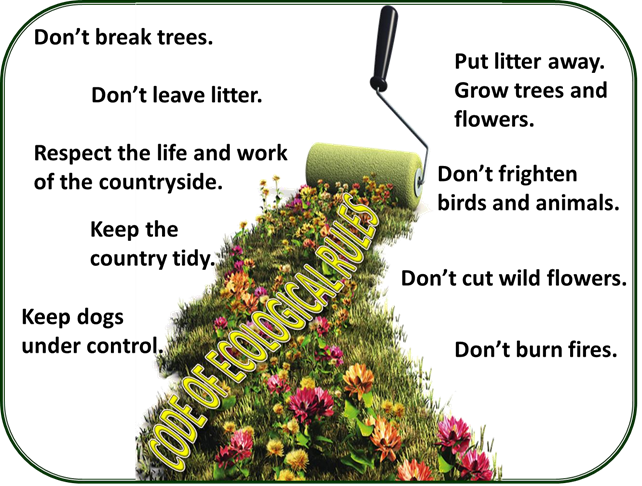
3.5. Лексична хвилинка
Методичний коментар. Під час лексичної хвилинки учні закріплюють знання екологічної лексики. Завдання: до ключових слів підібрати відповідне пояснення.
Find the best way to define the words.
Pollution - … 1) Dirty water, air and atmosphere.
2) Making water, air, atmosphere dirty and dangerous for people and animals to live in.
3) People who make water, air and atmosphere dirty and dangerous.
Environment – …
1) Air, water and land, in which people, animals and plants live.
2) An organization that wants to protect the natural world.
3) Something that we do to prevent air and water pollution.
Ecology - …
1) Natural balance between plants, animals, people and their environment.
2) Plants growing in some area.
3) Part of medicine that helps people to lead a healthy life.
Greenhouse effect - …
1) A building in a garden or park which has glass walls and a glass roof in which you grow plants.
2) A salad made mainly with green vegetables;.
3) The problem of temperature rise in the Earth’s atmosphere.
3.6. Екологічні заклики серед нас
Методичний коментар. Завдання: до екологічних закликів англійською мовою необхідно обрати правильний переклад.
Find Ukrainian equivalents to some English slogans.
|
1. Keep your country tidy! 2. Keep off the grass! 3. Put your litter in the bin! 4. Keep dogs under control! 5. Recycle! 6. Respect the life and work of the |
a) Бережи природу! b) Не смітити! c) Переробляйте відходи! d) Поважайте життя природи! e) По газонах не ходити! f) Вигул собак заборонено! |
countryside!
Answers: 1- a) 2- e) 3 - b) 4 – f) 5 – c) 6 – d)
3.7. Відеорефлексія
Методичний коментар. Демонструється екологічний відеоролик. Відбувається вироблення головного рішення екологічної проблеми.
What is the way of solving ecological problem?
What is recycling?
Recycling is the process of collecting and processing materials that would otherwise be thrown away as trash and turning them into new products. Recycling can benefit your community and the environment.
ІV. РЕФЛЕКСІЯ
4.1. What or Who influences the environment?
Методичний коментар. На даному етапі викладач повертається до ключового запитання. В ході заходу було доведено, що головною причиною екологічних проблем є ЛЮДИНА.
«What or Who influences the environment?» (People influence our environment)
4.2. «Beautiful Nature Video & Relaxing Music - Call From The Past (HD)»
Методичний коментар. Учнівська конференція закінчується відеорелаксацією.
In the and of our work I want you to have a rest. Imagine that you are far from the city. You breath fresh air. You drink clean water. You can see beautiful nature and walk along picturesque valleys. You are a part of a great world of our beautiful nature.
It’s cool when the weather is frosty,
It’s excellent when the temperature’s hot,
You look in the sky with the flossy
And soft and white clouds of Got!
Save our Earth for future generations!


про публікацію авторської розробки
Додати розробку










































